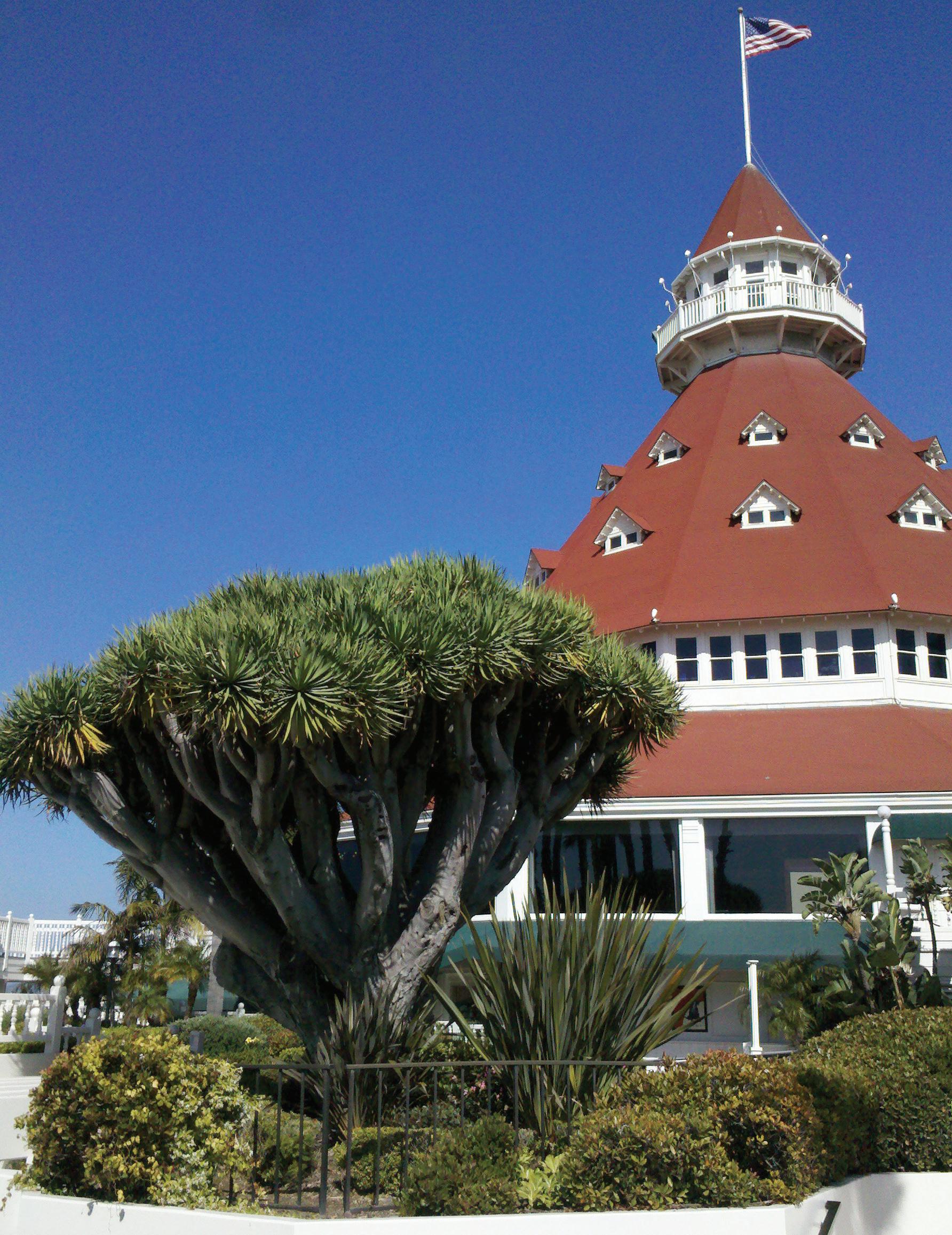
2 minute read
Dragon Trees
Remnants of Early Gardens

Advertisement
In addition to the iconic Dragon Tree at Hotel del Coronado (left), specimens are growing all over Coronado.
One of Coronado’s most iconic horticultural image is the dragon tree. Dragon trees (Dracaena draco) are succulents under the same horticulture family classification as asparagus. Native to the Canary Islands, they are drought tolerant and well suited to our climate. Dragon trees can be seen all around Coronado, the most famous specimen residing at the Hotel del Coronado.
Popularized in the early 1900s, the first trees were brought to San Diego by traveling horticulturalists, with Kate Sessions being one of the more famous intrepid gatherers. The unusual plants were brought into the spotlight during the 1915 Panama-California Exposition in Balboa Park. At the time, gardening was becoming a hobby for the masses, and many Coronado residents had the means to spend time and money to cultivate their interest and acquire unusual plants for their properties – including the dragon tree.
The slow-growing dragon trees were a popular planting choice for their novelty with their unusual shape, branches that looked like lizard skin, and the red sap that oozed from broken branches. In ancient Rome, the sap was used as a pigment to dye marble and wood. In the Canary Islands, it was used in the mummification process. Another reason for their popularity was their drought tolerance. A century ago, gardeners had to be thoughtful about water use because irrigation was virtually nonexistent and hand-watering larger properties was an indulgence. Since their native environment is a dry climate, Southern California is an ideal spot for them to grow.
In their native environment, the trees are known to grow for hundreds of years. Many of the large dragon trees around Coronado are over 100 years old, typically sitting on larger properties of older homes. Over the past few years, we’ve lost a few historic specimens to construction or age. Dragon trees aren’t planted by landscapers much now due to much smaller lot sizes and the need for faster growth to fill out gardens. It’s likely these trees will become very rare over time.
For now, beautiful specimens are still thriving all over town and can be seen along Ocean, Alameda, Glorietta and Monterey boulevards, on Flora Avenue and, of course, at Hotel del Coronado. Dragon trees are still very impressive with their mass and unique shapes. As some of Coronado’s earliest residents, they are lasting legacies of early horticulture we can still appreciate today.


